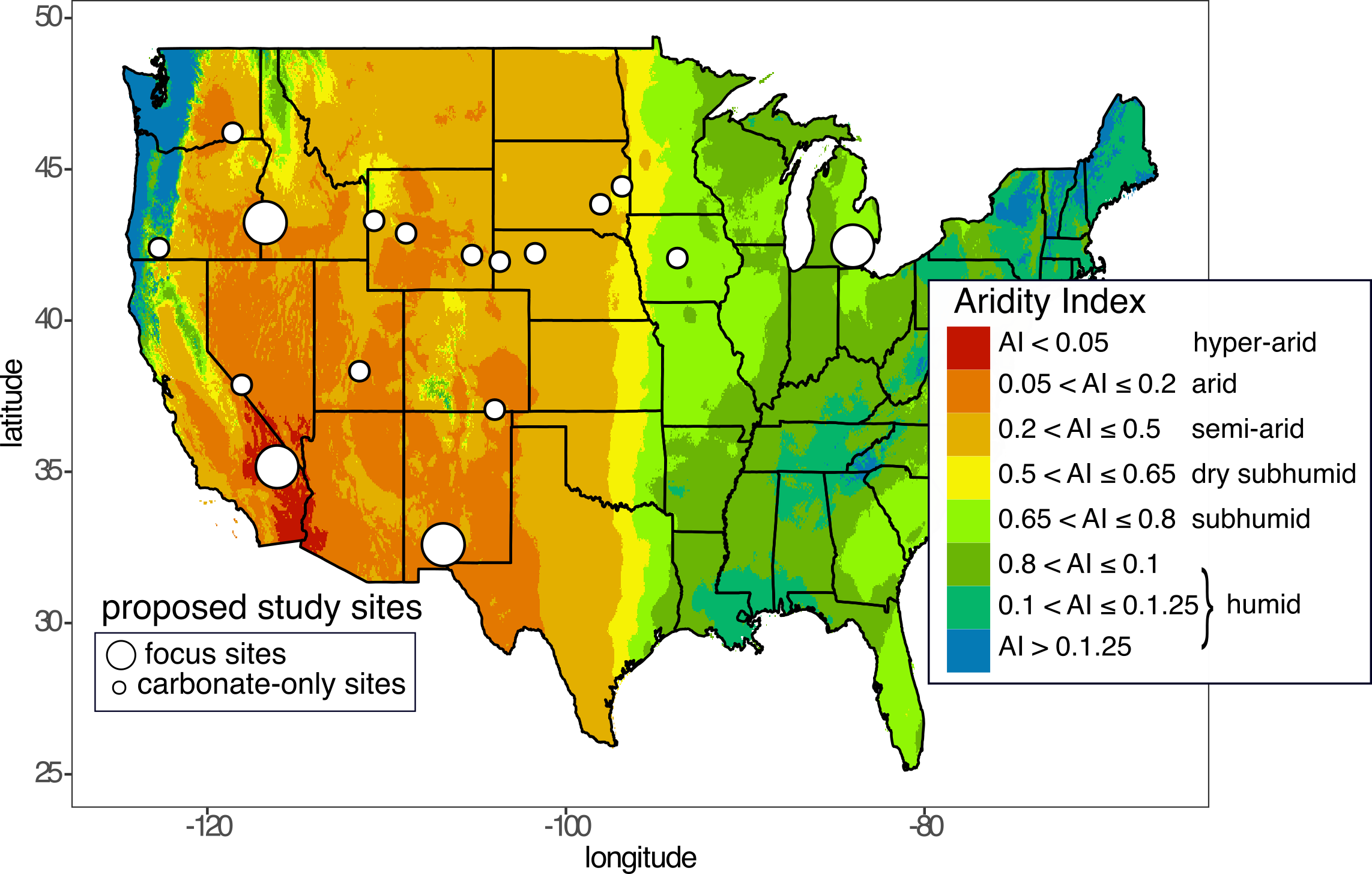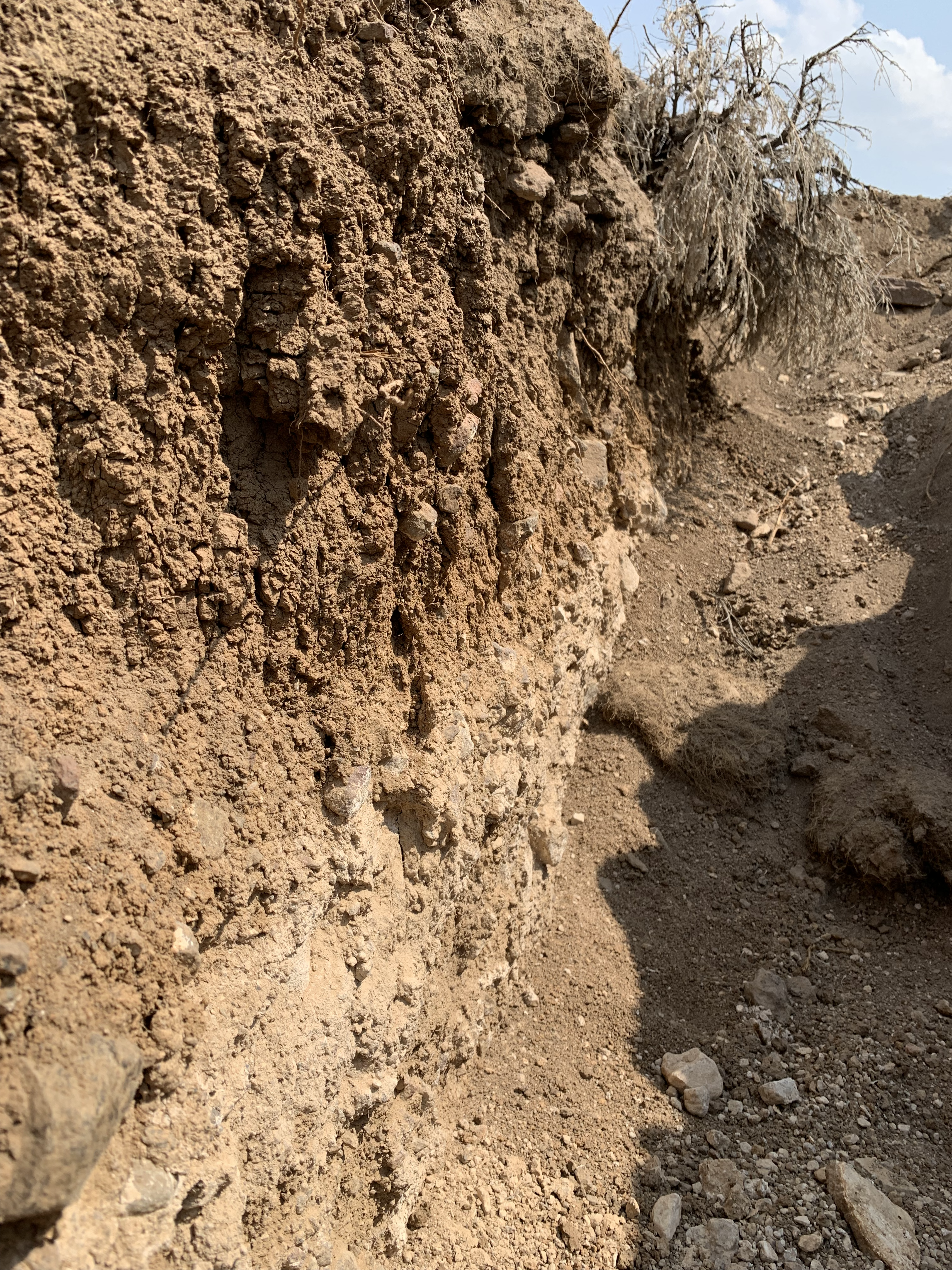Soils are key to understanding climate change in drylands given their importance in mediating the flux of both water and carbon. Pedogenic carbonates underly dryland soils and provide essential ground-level perspectives on climate change through geologic time and in the present. However, pedogenic carbonates currently fall short as tracers of water and carbon fluxes because we have an incomplete understanding of how they form.
To address the gap in our understanding of how soil carbonates form, my collaborator Naomi Levin and I are using triple oxygen isotope geochemistry (primer here) to directly assess the importance of evaporation during soil carbonate formation. We’re considering how and where biotic processes (root water uptake/transpiration) vs abiotic processes (evaporation) dominate soil carbonate formation.
We are working across aridity gradients in North America, specifically targeting two sites that are a part of the Drylands Critical Zone Network - Jornada, New Mexico, and Reynolds Creek, Idaho. Our driest soils sites are in the Mojave National Preserve which has an incredible network of above- and below- ground monitoring sites set up by our collaborator Ron Amundson (UC Berkeley).

Study sites take advantage of the natural gradient in aridity in the Western US.
This is just the start of an NSF-funded two year project! So far, the project has been an awesome way to connect with collaborators who also love soils, isotopes, and drylands.
The preliminary data that provided the basis for our successful NSF proposal is described in my Goldschmidt presentation from 2020.

A beautiful calcic horizon exposed in an open trench at the Lower Sheep site in Reynolds Creek, Idaho.